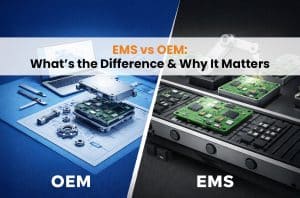Introduction:
In the world of electronics, a meticulously crafted box build assembly is a crucial element that ensures the safety, functionality, and aesthetic appeal of electronic devices. If you’re a seasoned engineer, this guide will take you through the essential steps to create a reliable and professional electronics box build assembly services
Understanding the Basics:
Before diving into the assembly process, it’s crucial to understand the purpose of an electronics box build. Essentially, it serves as a protective enclosure for electronic components, shielding them from external factors such as dust, moisture, and physical damage. Moreover, it aids in organizing the components in a structured manner, facilitating ease of maintenance and troubleshooting.
Benefits of Using a Box Build Assembly:
Streamlined Manufacturing Process: Box building Assembly consolidates multiple components into a single assembly, simplifying the manufacturing process. This streamlining leads to increased efficiency, reduced production time, and lower labor costs.
Reduced Supply Chain Complexity: A box build involves sourcing and integrating various components from different suppliers into one final product. This reduces the complexity of managing multiple suppliers, simplifies logistics, and minimizes the risk of supply chain disruptions.
Cost-Effective Production: By outsourcing the box building assembly process to a specialized manufacturer, companies can often achieve cost savings. These savings come from economies of scale, expertise in assembly processes, and efficient resource utilization.
Quality Control and Testing: Box builds facilitate rigorous quality control and testing processes. As all components are integrated into a single assembly, it becomes easier to conduct comprehensive testing on the entire system. This ensures that the final product meets or exceeds specified quality standards.
Faster Time-to-Market:
The integration of components within a box build accelerates the overall product development timeline. Instead of managing the assembly of individual parts separately, companies can focus on designing and refining the core functionalities of their product, leading to a quicker time-to-market.
Simplified Prototyping:
Box builds are particularly advantageous during the prototyping phase. Engineers can quickly assemble and test a prototype, allowing for faster iterations and improvements. This iterative process is crucial for refining the design and functionality of the final product.
Customization and Flexibility:
Box building assembly offers flexibility in design and customization. Manufacturers can easily adapt the assembly to accommodate changes in specifications, upgrades, or variations in product configurations. This adaptability is crucial in dynamic industries where product requirements may evolve.
Materials and Tools:
To embark on your electronics box build assembly journey, gather the necessary materials and tools. Consider using materials like ABS plastic or aluminum for the enclosure, as they offer a good balance between durability and weight. Additionally, stock up on screws, standoffs, and cable glands to ensure a secure and organized interior. Tools such as a screwdriver, drill, and wire strippers will be indispensable during the assembly process.
What are the processes of box build assembly in electronics?
1.Design and Planning: Begin the process by sketching out the design of your electronics box build. Consider the dimensions, placement of components, and the number of input/output ports required. This step is crucial for ensuring that the PCB assembly accommodates all necessary elements and meets your specific requirements. There are also various online tools and software applications that can assist in creating a detailed design before you start building.
2.Component Installation: Once your design is finalized, it’s time to start installing the electronic components. Begin with mounting the PCB (Printed Circuit Board) at a secure location within the enclosure using standoffs. Carefully route and secure the wires, ensuring they are organized and do not obstruct other components. Pay attention to the placement of connectors, switches, and indicators, making them easily accessible from the exterior.
3.Considerations for Ventilation: Proper ventilation is crucial to prevent overheating of electronic components. Integrate ventilation holes or fans into your design to facilitate airflow. This is especially important for assemblies that involve power-hungry components or operate in environments with elevated temperatures.
4.Cable Management: A neat and organized interior not only enhances the aesthetics but also eases maintenance and troubleshooting. Implement cable glands and tie wraps to secure and route cables effectively. This not only reduces the risk of damage but also ensures a clean and professional appearance.
5.Testing and Quality Assurance:
Before sealing the box build assembly, conduct thorough testing to verify the functionality of all components. Check for any loose connections, short circuits, or irregularities in performance. This step is critical to identify and rectify issues before they become more challenging to address post-assembly.
6.Finalization and Sealing:
Once you’ve ensured that everything is in working order, proceed to seal the enclosure securely. Use the appropriate screws and ensure that the box is tightly closed to provide adequate protection to the internal components. Consider applying a sealant around seams to enhance water resistance if the assembly is expected to encounter moisture.
Conclusion:
Roots EMS crafts a professional and reliable electronics box build assembly service is a rewarding process that requires careful planning and attention to detail. Whether you’re creating a prototype for a new electronic device or upgrading an existing assembly, following this comprehensive guide will contribute to the success of your project.


